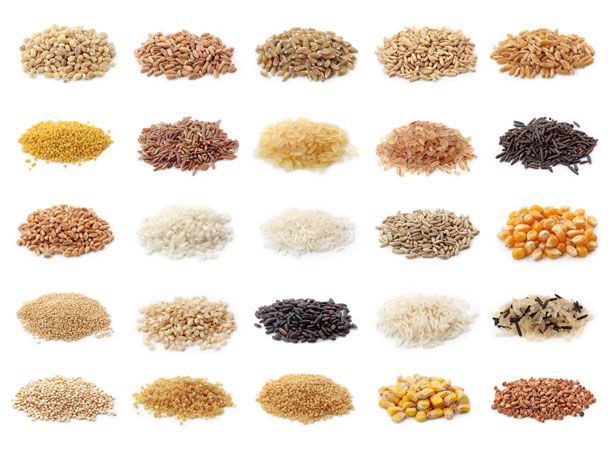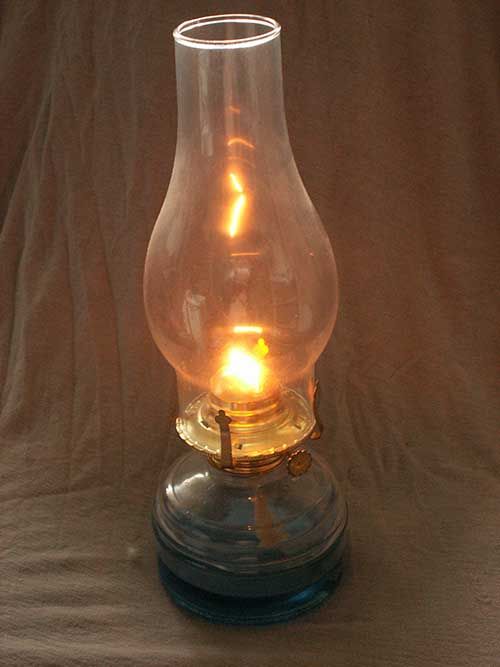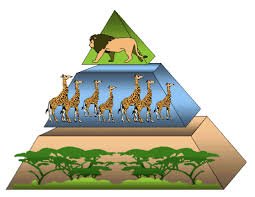Sensors are extensively used in numerous electrical appliances throughout the world. They strive to make our lives simpler by performing many jobs such as turning on the lights when we walk in the room, detecting smoke or fire, regulating the room temperature, making us a great cup of coffee, opening garage doors, etc. This article will dive into the specifics of what a sensor is, the applications of sensors, as well as the different types of sensors available.
What is a Sensor?
A sensor is a device that takes physical input from its surroundings and turns it into data that a human or a machine can evaluate. The majority of sensors are electronic, however, some can be analog. For example, a glass thermometer that displays body temperature is an analog sensor.
Types of Sensors
Sensors are categorised depending on their function. Some common types of sensors include:
Temperature Sensor

A temperature sensor is one of the most commonly used sensors. As the name implies, this sensor detects the temperature as well as monitors temperature changes. Temperature sensors come in a variety of forms, including temperature sensor ICs (such as the LM35 as well as DS18B20), thermistors, thermocouples, RTDs (Resistive Temperature Devices), and so on. These sensors can be either analogue or digital in nature. Temperature variations in an analogue temperature sensor correspond to changes in physical properties such as resistance or voltage.
A variety of electrical appliances like computers, automobiles, mobile phones, air conditioning systems, etc, use temperature sensors. Another common practical use of a temperature sensor is in an industrial temperature controller, used for managing the temperature of devices employed in manufacturing companies.
Proximity Sensor
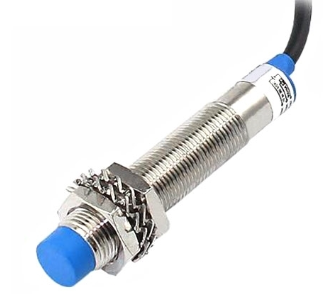
This type of sensor is a sort of non-contact sensor that detects the presence of an item in its vicinity. To do so, proximity sensors employ a variety of approaches such as optical (such as infrared or laser), sound (ultrasonic), magnetic (Hall Effect), capacitive, and so on. The different applications of proximity sensors include parking sensors, object alignment in industries, as well as ground proximity detection in aircraft. Another common application of these sensors lie in automatically shutting and opening doors. These doors close and open depending on body movement near it.
Infrared (IR) Sensor

IR sensors, also known as infrared sensors, are light-based sensors, utilised in a variety of applications such as proximity and object detection.
Infrared sensors are classified into two types: transmissive and reflective.
- A transmissive type IR sensor can detect an object that passes in between it and a detector placed opposite to it.
- A reflective IR sensor detects an object that passes in front of the sensor. Here, the detector is placed next to the sensor.
IR sensors find many applications in robots, mobile phones, industrial assembly, vehicles, and many more.
Ultrasonic Sensor
An ultrasonic sensor is a non-contact device that can measure the distance as well as the velocity of an object. It operates on sound waves at frequencies higher than the human auditory range. The sensor can detect the distance of an item by measuring the duration of the sound wave. Furthermore, using the Doppler Shift feature of a sound wave, an ultrasonic sensor can calculate an object’s velocity. People may also use ultrasonic sensors to measure distances in regions with difficult and hard to traverse terrain.
Light Sensor
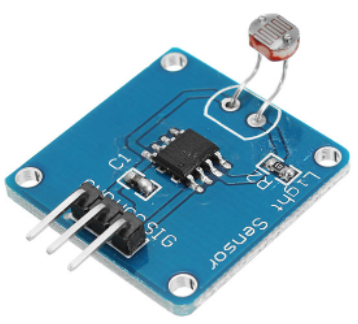
Photo sensors, also known as light sensors, are essential for many devices. One example is the Light Dependent Resistor or LDR. The resistance of LDR is inversely proportional to the intensity of the ambient light, which means that as the intensity of light grows, so does its resistance, and vice versa. Thus, we can calibrate variations in the resistance of an LDR in a circuit to estimate the intensity of light. A photo-diode and a phototransistor are two other light sensors that are frequently utilised in complex electrical systems. These are types of analog sensors.
Smoke and Gas Sensor
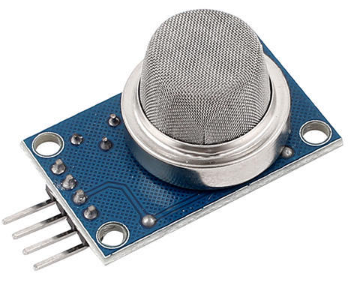
A smoke and gas sensor is extremely valuable in safety-related devices. In fact, almost all homes, workplaces and companies have smoke detectors, that detect any smoke caused due to a fire and sound an alert.
On the other hand, labs, large-scale kitchens, and industrial settings commonly have gas sensors. They can detect various gases such as LPG, Propane, Methane, Butane, and others. For example, the “MQ” series of sensors is a collection of low-cost sensors for detecting carbon dioxide, carbon monoxide, methane, butane, propane, alcohol, and other gasses. These sensors can be used in a DIY smoke detector.
Alcohol Sensor
This sensor, as the name implies, detects alcohol. Typically, alcohol sensors are employed in breathalyser equipment to assess whether or not a person is intoxicated. Therefore, law enforcement uses breathalysers to catch drunk drivers.
Touch Sensor
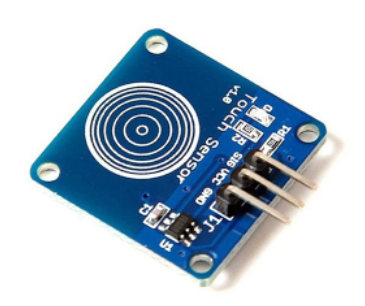
These sensors are an essential part of our lives. All touch screen gadgets (for example, tablets, mobile phones and laptops) have touch sensors. Trackpads on modern computers are another typical application for touch sensors. These sensors sense the touch of a finger or a stylus.
They are of two types of touch sensors: capacitive and resistive. Resistive touch sensors detect touch by responding to pressure applied on its surface. These sensors have a number of layers. Therefore, it is not always precise and tends to cause a lot of reflection. Because capacitive touch sensors are more precise and have a higher signal-to-noise ratio, they are used in almost all current touch screens.
Colour Sensor
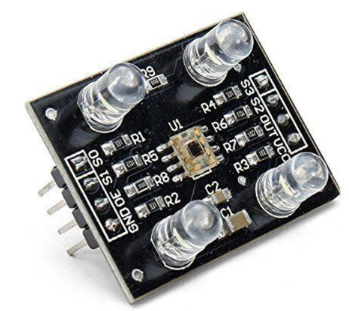
A colour sensor is a valuable device for developing colour sensing applications such as image processing, industrial item tracking, colour identification, and so on. For example, the TCS3200 is a basic colour sensor that can detect any colour and generate a square wave proportionate to its wavelength.
Humidity Sensor
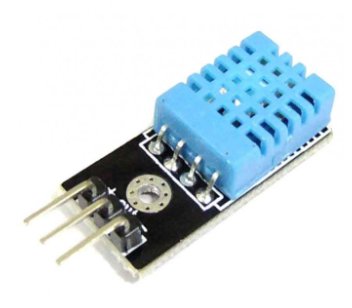
Weather Monitoring Systems, frequently include temperature as well as humidity data. This shows that monitoring humidity is a crucial task and humidity sensors help complete this task. All humidity sensors often monitor relative humidity, which refers to a ratio of water content in the air to the maximum potential of air to hold water. Furthermore, because air temperature affects relative humidity, practically all humidity sensors can also detect temperature.
DHT11 and DHT22 are two of the most popular humidity sensors among people interested in building electrical devices.
Tilt Sensor
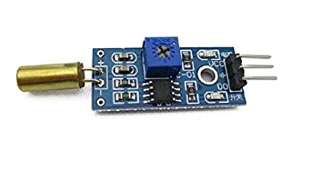
Tilt Sensors are one of the simplest and least expensive sensors available for detecting inclination or orientation. Previously, tilt sensors were made from Mercury, however, more recent tilt sensors feature a rollerball.
Speed Sensor
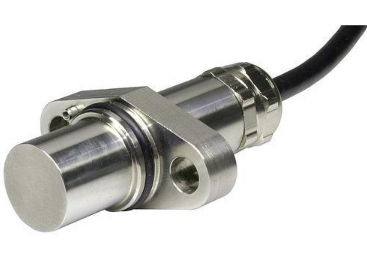
A speed sensor is a little gadget that informs the speedometer how quickly the vehicle is moving. Furthermore, it plays an important role in the transmission and cruise control systems of vehicles.
The Future of Sensor Technology
In the near future, as technology advances, sensors may become an integral part of our lives. Engineers and scientists all around the world may use sensors to improve transportation systems, nanotechnology, medical treatments, virtual as well as augmented reality, mobile devices, and even artificial intelligence (AI). In addition, scientists believe that sensors are essential in creating smart cities and appliances. Given below are the proposed applications of sensors in the future.
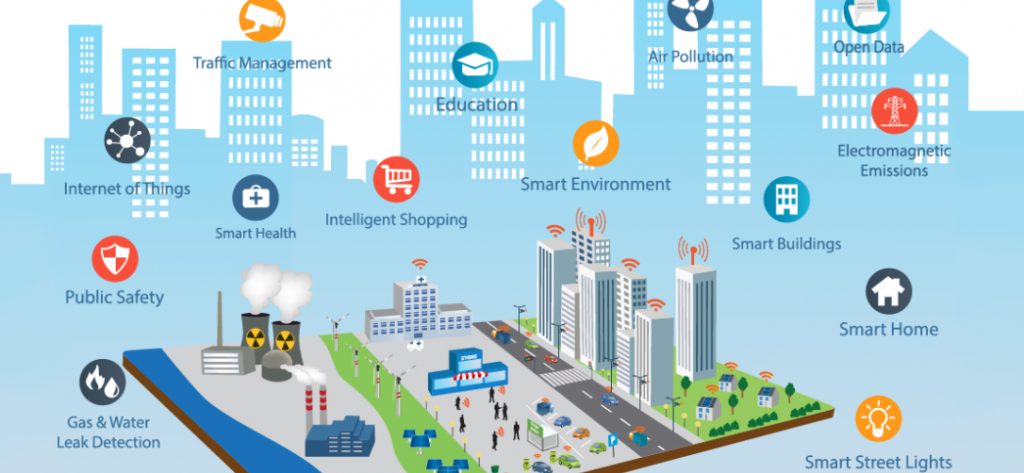
Applications of Sensors in Smart Cities
- Monitor the availability of parking places in the city.
- Monitor vibrations as well as conditions of materials in buildings, bridges, and historical monuments. This is important for the structural health of the building.
- Detect real-time sound in bar areas and focal zones.
- Detect iPhone and Android devices, as well as any other device that uses WiFi or Bluetooth interfaces.
- Measure the amount of energy emitted by cell towers and WiFi routers.
- Monitor vehicle and pedestrian levels in order to optimise driving and walking routes.
- Turn on intelligent and weather-adaptive street lights.
- Remote measurement of a swimming pool.
- Remotely control the swimming pool’s conditions.
- Control access to restricted locations and detect persons in non-authorized places.
Applications of Sensors in Detecting Environmental Problems in Future
- Detect CO2 emissions from companies, pollution from automobiles, as well as harmful gases produced in agriculture.
- Measure snow levels to determine the condition of ski trails in real-time and to help security forces prevent an avalanche.
- Monitor soil moisture, vibrations, and earth density in order to detect harmful occurrences for plants.
- Detect earthquakes.
- Monitor potable water.
- Help monitor the quality of the tap water.
- Measure sea pollution levels and control real-time leaks as well as waste in the sea.
Applications of Sensors in Smart Measurement
- Monitor and control energy use
- Measure the levels of water, oil, and gas in storage tanks as well as cisterns.
- Monitor performance and optimization in solar energy facilities
- Measure water pressure in water transportation systems
- Avoid breakdowns and corrosion due to water in data centres, warehouses, and sensitive building grounds
- Measure radiation levels in nuclear power plants and their surroundings.
Applications of Sensors for Intelligent Shopping
- Obtain recommendations at the point of sale based on client patterns, preferences, the existence of allergenic components, or expiration dates.
- Control of product rotation on shelves and in warehouses to automate restocking activities.
Other Applications of Sensors
- Monitor toxic gas and oxygen levels within chemical factories to maintain worker and product safety.
- Temperature control within industrial and medical refrigerators with sensitive merchandise.
- Monitor the level of ozone in food manufacturers during the drying meat process.
- To achieve the most efficient harvests, control the exact circumstances of plants grown in water.
- Control the growing conditions of young animals on farms to ensure their survival and health.
- Identification and location of animals grazing on open meadows or in large stables.
- Remotely turning on and off appliances to minimise accidents and conserve energy.
- Detection of window and door openings, as well as infractions, in order to deter attackers.
Final Thoughts
As evident from the article above, sensors are not only important in the present, but they also play a major role in the development of civilization in the future. Thus, it is important to understand the different types of sensors and their applications in the future.
For more interesting content visit Podium School.
FAQs
What happens when we use proximity sensors in hot environments?
If proximity sensors are utilised at temperatures over the indicated working temperature range, the change in sensing distance may be greater than the given value. At high temperatures, the sensing distance generally increases, and therefore the operating point and reset point both rise, the difference between the operating point and the reset point widens, and proximity sensors tend to not reset even if they function. In addition to the shift in detecting distance, sensors are likely to fail at some point.
How does an ultrasonic sensor work?
When a sensor receives electrical energy, a ceramic transducer (a device that both transmits and receives sound) vibrates. The vibrations compress and expand air molecules, creating waves that travel from the sensor’s face to a target item. The ultrasonic sensor can determine distance by generating a sound wave and then “listening” for a certain amount of time, allowing for the return echo of the sound wave rebounding off the target before retransmitting.
When is it better to utilise an ultrasonic sensor over an optical sensor?
We can use ultrasonic sensors when sensing transparent objects, liquid levels, highly reflective or metallic surfaces. Unlike optical sensors, ultrasonic sensors work well in moist conditions, as water droplets may refract optical beams. However, ultrasonic sensors are subject to change in temperature or wind. In such cases, optical sensors are preferred.
How do noise and interference affect ultrasonic sensors?
Any acoustic disturbance at the frequency to which the ultrasonic sensor is responsive may interfere with the output of that sensor. This comprises high-pitched noises produced by a whistle, as well as the hissing of relief valves, pressurised air, or pneumatic equipment. Acoustic crosstalk can also occur when two ultrasonic sensors of the same frequency are placed near each other. Electrical noise is another type of noise that is not exclusive to ultrasonic sensors.
What exactly is a dead zone?
The dead zone refers to the area right in front of the transducer face where the sensor cannot consistently make measurements. This is caused by a phenomenon known as ringing. The prolonged vibrations of the transducer following the stimulation pulse is referred to as ringing. Therefore, before the transducer can listen for a return echo, the energy or vibrations must dissipate. Hence, the target needs to be set up outside the sensor’s defined dead zone.
Do ultrasonic sensors have a slower response time than photoelectric sensors?
Yes. Because the speed of sound is far slower than the speed of light, an ultrasonic sensor is, by definition, slower than an optical sensor.
How do photoelectric sensor indicators work?
A photoelectric sensor possesses a green indication for stability as well as a red indicator for incident light. Depending on the amount of incoming light, there are four operating patterns.
| Sl. No. | Incident light | Indicator | Status | |
| Green | Red | |||
| 1 | 1.2 min. | Yes | Yes | Stable, light |
| 2 | 1.0 to 1.2 | No | Yes | Unstable, light |
| 3 | 0.8 to 0.99 | No | No | Unstable, dark |
| 4 | 0.8 max. | Yes | No | Stable, dark |
Indicator of Stability
After installation, the stability indicator displays the excess gain of temperature, voltage, dust, as well as other environmental variations.
Indicator of Incident Light
The incident light indicator indicates how much light enters the receiver.
Is it possible to find heat-resistant photoelectric sensors?
Yes, heat resistance parameters are available for fibre-type photoelectric sensors. However, the heat resistance criteria, only apply to the fibre unity, not amplifier units.
What is the smallest target that infrared sensors can detect?
IR sensors can detect objects as tiny as 0.43mm. However, the temperature and emissivity are some constraints that prevent detection of smaller objects. Although the temperature or emissivity decreases, the instrument’s spot size cannot reduce as much. Thus, you must place the sensor closer to the subject, and use a tight focus lens.
What is the function of a smoke detector?
The emergence of smoke, a spike in temperature, or a powerful flash of light can all indicate the presence of a fire. The detection of smoke depends on the fixation of combustion products within the detector housing. The system contains an LED that creates a light beam as well as a photocell that turns the light into an electrical signal. The LED’s light beam is specially directed past the photocell.
In the absence of smoke, light cannot reach the photocell’s surface. However, if smoke enters the sensor body, the light beam reflects at random and strikes the photocell. This completes the electronic circuit and delivers a command to start the alarm device.
A drawback of these detectors is that water vapour or gases that enter the sensor can deflect the light output and generate a false warning. As a result, people can not place smoke detectors in locations where they might fail.
How does a humidity sensor work?
Humidity refers to the presence of water in the air. The quantity of water vapour in the air can have an impact on human comfort as well as numerous industrial production processes. In other words, water vapour has an impact on a variety of physical, chemical, and biological processes.
Humidity sensors detect variations in electrical currents or temperature in the air. They are classified into three types: capacitive, resistive, and thermal. To compute the humidity in the air, all three types can detect minute changes in the environment. For more information on the functioning of humidity sensors, you may refer to the document attached below.
What are the types of Humidity sensors?
The relative humidity of a capacitive humidity sensor is measured by sandwiching a thin strip of metal oxide between two electrodes. The electrical capacity of metal oxide varies with the relative humidity of the environment. The principal applications of humidity sensors lie in weather detection and industries. On the other hand, ions in salts are used to detect the electrical impedance of atoms in resistive humidity sensors. The resistance of the electrodes in a medium changes along with humidity.
Lastly, are thermal sensors. Based on the humidity of the surrounding air, two thermal sensors transmit electricity. One sensor is surrounded by dry nitrogen, while the other monitor’s ambient air. The difference between the two is used to calculate humidity.
How does the speed sensor function?
The rotational speed of the gears in your transmission system is measured by the vehicle speed sensor. The measurement is then converted into an analogue signal or a low voltage square wave signal, which is sent to electronic control units (ECUs) within your automobile.
What are the signs of a faulty speed sensor?
The 6 signs of a faulty speed sensor are as follows:
Transmission issue
The transmission control module (TCM) or powertrain control module (PCM) uses vehicle speed information transmitted by the Vehicle Signal Specification (VSS) to calculate shift time. As a result, a faulty speed sensor may have an immediate influence on automatic gearbox operation.
Erratic speedometer readings
Because many cars use the VSS as the major input for speedometer operation, a faulty VSS might cause the speedometer to provide inconsistent or no readings at all.
Inability to activate cruise control
When the PCM fails to receive information from the VSS, the cruise control in the car is often deactivated. This is due to the fact that the system requires sensor data in order to keep the automobile running at a constant speed.
Disabled car’s cruise control
A faulty speed sensor may cause the vehicle’s cruise control to be disabled.
No torque converter clutch application
The torque converter clutch is engaged at a predetermined speed. The transmission torque converter may be unable to engage the clutch and make a connection between the engine and gearbox without precise information from the vehicle speed sensors. As a result, the vehicle may have an increased tendency of sliding, decreased fuel efficiency, and an overheated gearbox.
Activated check engine light
The PCM can cause your vehicle’s check engine light to light for a variety of reasons, one of them being a defective VSS. To determine whether the error code indicates a VSS problem, connect your car to an OBD-II scan tool. Other warning lights such as those for the ABS and traction control systems may also appear on the dashboard.
Share with your friends
